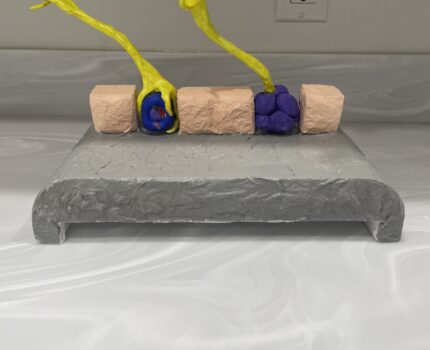Coronary Artery Disease With Heart Pumping Model
My STEAM Project is on coronary artery disease. The objective covered is to explain the structure and function of the heart and to know the path of blood through the heart and circulatory system. Coronary artery disease (CAD) is a heart condition where the heart does not get enough oxygen-rich …
ELIJAH MEAD STEAM ANATOMY SEMESTER II: CYSTIC FIBROSIS
cystic fibrosis is a genetic disease caused by a mutation of the CFTR gene, the gene responsible for regulating the amount of chloride salt transmembrane channels in cells that produce mucus or sweat. The overproduction of mucus caused by cystic fibrosis has affects in the respiratory as well as digestive …
Breastfeeding: Initiating, Maintaining and Preventing Problems
https://drive.google.com/file/d/1YbstSiSJ-AHTlGPxvhQIhuDP30NNFD3J/view
Endometriosis
Olivia Tucker University of Fairbanks, Alaska Human Anatomy & Physiology Professor Larson April 18, 2024 The course objective I would like to cover in this paper are: Endometriosis About 5 million women in America suffer from endometriosis. The cause of endometriosis is unknown. There is no known way to prevent …
White Blood Cell Impacts with Leukemia
For my steam project I chose to look at the white blood cells in out body and how they function. More specifically I looked at the lymphocytes, and how they were affected in a healthy individual vs an individual that has leukemia.
Neuroendocrine Cells and their effect on Endocrine Neural Interactions
I focused on explaining “how the endocrine system and nervous interact with each other”. I did this by exploring neuroendocrine tumors. Neuroendocrine tumors or NETS is a classification of rare tumors called neuroendocrine neoplasms—the heterogeneous tumor affects neuroendocrine cells meaning endocrine cells connected to the nervous system (Oronsky, Ma, Morgensztern, & Carter, 2017). Neuroendocrine cells are similar to nerve cells and hormone-producing cells in traits (Neuroendocrine tumors, 2023). The neuroendocrine system is responsible for transporting information, regulating metabolic functions, and controlling the interaction between the body’s organs (NeuroEndocrine Cancer Australia, 2022). Neuroendocrine cells make hormones like endocrine cells, receive signals like nerve cells, and release hormones (NeuroEndocrine Cancer Australia, 2022).
Hemoglobin and its Binding Affinity
Hemoglobin is a protein found in red blood cells that binds to oxygen and transports it throughout the body. Why does it bind to oxygen though? Are there other molecules that it may bind to instead? Carbon monoxide is a chemical commonly produced by incomplete combustion and exists in small …

